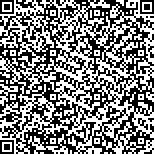| 引用本文: | 尚庆学,韩镝,孙国良,汲书强,左浩朋,王涛.基于振动台试验的通信机柜地震易损性分析[J].哈尔滨工业大学学报,2022,54(5):57.DOI:10.11918/202104057 |
| SHANG Qingxue,HAN Di,SUN Guoliang,JI Shuqiang,ZUO Haopeng,WANG Tao.Seismic fragility analysis of telecommunication cabinets based on shaking table tests[J].Journal of Harbin Institute of Technology,2022,54(5):57.DOI:10.11918/202104057 |
|
| 摘要: |
| 为考察通信机柜在不同地震强度下的损伤情况,进行了36款通信机柜的振动台试验。根据规范要求采用人工合成地震动作为振动台试验输入。试验结果表明,满足检测标准的机柜有13个,不满足检测标准的有23个,其中有9个机柜在检测中发生倾倒。通信机柜产品质量参差不齐,抗震性能状况堪忧,可能为数据中心的正常运行埋下安全隐患。基于试验测得的加速度时程曲线,对机柜加速度放大效应进行了对比分析,发现不合格机柜的顶部加速度放大效应明显大于合格机柜,中部加速度放大效应基本相当。本文基于36款通信机柜的振动台试验检测结果,建立机柜的地震易损性模型,选取楼面峰值加速度为工程需求参数,以难以修复、丧失使用功能定义通信机柜的损伤状态。结果表明:在楼面峰值加速度达到1.118 1 g时,通信机柜即有50%的概率丧失使用功能。通过与已有文献中的易损性曲线研究结果对比,发现通信机柜尺寸对其地震易损性的影响较小,但与单向地震激励相比,双向地震输入下机柜更易发生破坏、丧失使用功能。 |
| 关键词: 通信机柜 振动台试验 地震易损性 需求谱 丧失使用功能 |
| DOI:10.11918/202104057 |
| 分类号:TU318 |
| 文献标识码:A |
| 基金项目:中国地震局工程力学研究所基本科研业务费专项(2020EEEVL0502) |
|
| Seismic fragility analysis of telecommunication cabinets based on shaking table tests |
|
SHANG Qingxue1,HAN Di2,SUN Guoliang2,JI Shuqiang2,ZUO Haopeng1,WANG Tao1
|
|
(1.Key Laboratory of Earthquake Engineering and Engineering Vibration of China Earthquake Administration (Institute of Engineering Mechanics, China Earthhquake Administration), Harbin 150080, China; 2.China Academy of Information and Communications Technology, Beijing 100191, China)
|
| Abstract: |
| Shaking table tests on 36 telecommunication cabinets were conducted to investigate the seismic damage of cabinets under different earthquake intensities. Artificial ground motions were adopted as the inputs of the shaking table tests according to the standards. Results show that 13 cabinets met the standards, while other tested cabinets failed to meet the standards, and nine of them overturned during the tests. The quality of the telecommunication cabinets was uneven with poor seismic performance, which may pose a potential safety loophole for the normal operation of internet data centers. The acceleration amplification effects of the cabinets were compared and analyzed based on the recorded acceleration time-history curves during the tests. It was found that the acceleration amplification effect at the top of the unqualified cabinets was significantly larger than that of the qualified cabinets; the acceleration amplification effect at the middle of the cabinets was basically the same. The seismic fragility model of the telecommunication cabinets was developed based on the shaking table test data of 36 cabinets in this study. Peak floor acceleration was selected as the engineering demand parameter and the damage state of the cabinets was defined as hard to recover and loss of functionality. Test results show that when the peak floor acceleration was 1.118 1 g, the exceedance probability corresponding to the damage state of loss of functionality of the telecommunication cabinets was 50%. By comparing the results with the existing fragility curves in the literature, it was found that the dimensions of the telecommunication cabinets had little influence on their seismic fragility. The cabinets were more prone to be damaged and easier to lose functionality under bidirectional seismic excitations than under unidirectional seismic excitations. |
| Key words: telecommunication cabinet shaking table test seismic fragility required response spectra loss of functionality |







